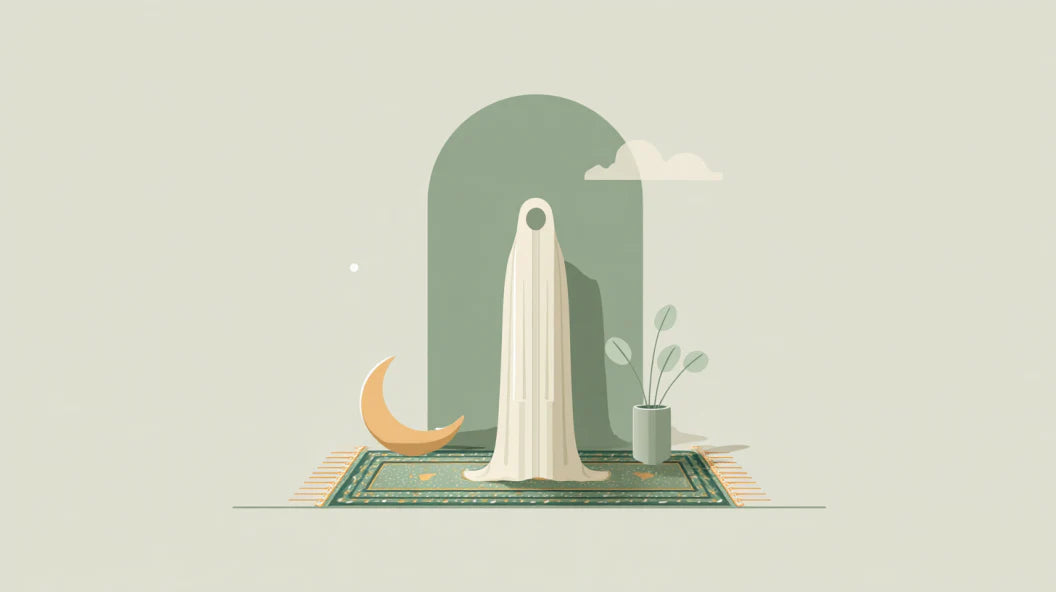
Muslim Funeral Etiquette: Traditions, Rituals, and Respects
Quick overview
Islamic funerals emphasise dignity, simplicity and communal care. Typical elements include ritual washing (Ghusl), simple shrouding (kafan), the communal Janazah prayer, and a prompt burial. These practices reflect equality before God and provide practical, spiritual support to the bereaved.
Core rituals: Ghusl, Shrouding & Janazah

Ghusl (ritual washing)
Ghusl al-mayyit is a respectful, methodical washing of the body performed by same-sex family or trained community members. The sequence varies slightly by tradition but typically includes cleansing, washing specific body parts in order, drying and light perfuming (if customary).
Shrouding (Kafan)
After washing, the body is wrapped in plain white cloth (kafan). The number of cloth pieces may vary by local custom, but the core symbolism is the same: simplicity and equality. Elaborate clothing, jewellery or ornamentation is typically avoided.
Ṣalāt al-Janāzah (funeral prayer)
The Janazah prayer is a brief, communal supplication asking for mercy and forgiveness for the deceased. Mourners stand shoulder-to-shoulder facing the Qibla. The prayer is concise by design — reflecting communal solidarity and humility.

Timing & burial location
Where practicable, burial in Islamic tradition is prompt — often within 24 hours — to honour the deceased. If delays are unavoidable for legal or logistical reasons, communities adapt while maintaining the core rites.
- Grave orientation: the body is usually placed on its right side facing the Qibla (Mecca).
- Simplicity: ornate tombs are discouraged; many communities favour modest markers or none at all.
- Coffin use varies by jurisdiction; some communities bury directly while others use simple wooden coffins where required.
How to behave as an attendee
If you are attending a Muslim funeral, follow these practical etiquette guidelines to show respect:
- Arrive quietly and take a seat with subdued behaviour.
- Follow gender arrangements when present; some services separate men and women.
- Silence phones and minimise movement or conversation during rites and prayers.
- Non-Muslims are welcome to attend; stand respectfully during Janazah if you do not participate in recitation.
- Don’t bring flowers unless the family indicates otherwise; many Muslim families prefer practical support or donations.

What to wear & gift guidance
Dress modestly and conservatively. Dark or muted colours are appropriate. Women may cover their hair in many settings; if unsure, bring a scarf or ask a family member ahead of time.
Helpful condolence gestures often include:
- Providing food — preparing or bringing a meal for the bereaved family is frequently appreciated.
- Offering practical help — transport, childcare or running errands.
- Making a donation to a charity or mosque in the deceased’s name in place of flowers.
What to say — condolences and taziyah
Keep condolences simple and sincere. Common Muslim expressions include "Inna lillahi wa inna ilayhi raji'un" (We belong to Allah and to Him we shall return) and short prayers. For non-Muslims, a quiet "I’m so sorry for your loss" or "You are in my thoughts" is respectful.
What to avoid
- Avoid theological debate or unsolicited advice.
- Do not ask intrusive questions about the cause of death during the service.
- Don’t assume the family’s level of observance; follow their cues and community customs.
Cultural variations & special cases
While core rites are consistent, local and cultural practices influence length of visitation, mourning periods, and post-burial customs. When rituals differ, remain humble, observe quietly, and ask discreetly when appropriate.
Further resources
- ICNA — What to Expect at a Muslim Funeral
- Wikipedia — Islamic funeral (overview)
- A Guide to Muslim Funeral Traditions (practical steps)
Practical checklist for attendees

- Arrive quietly and on time.
- Dress modestly (neutral colours; women may cover hair).
- Switch off phones and avoid photography unless invited.
- Stand respectfully during Janazah; non-Muslim guests may stand quietly without joining recitation.
- Offer practical help (meals, transport, childcare) rather than flowers.
- If unsure, ask the family or a community elder how you can assist.
Conclusion
Being present at a Muslim funeral is an opportunity to show compassion and solidarity. The essentials are respect, humility, and a readiness to provide practical support. Follow the family’s lead, observe quietly, and offer help after the ceremony — these simple acts make a meaningful difference.
- Choosing a selection results in a full page refresh.
- Opens in a new window.
